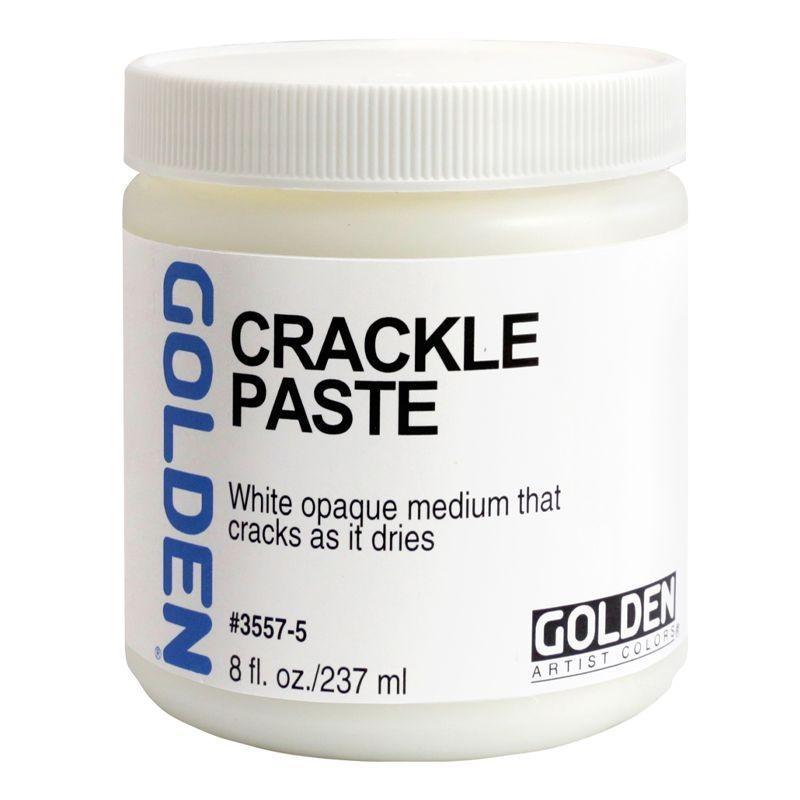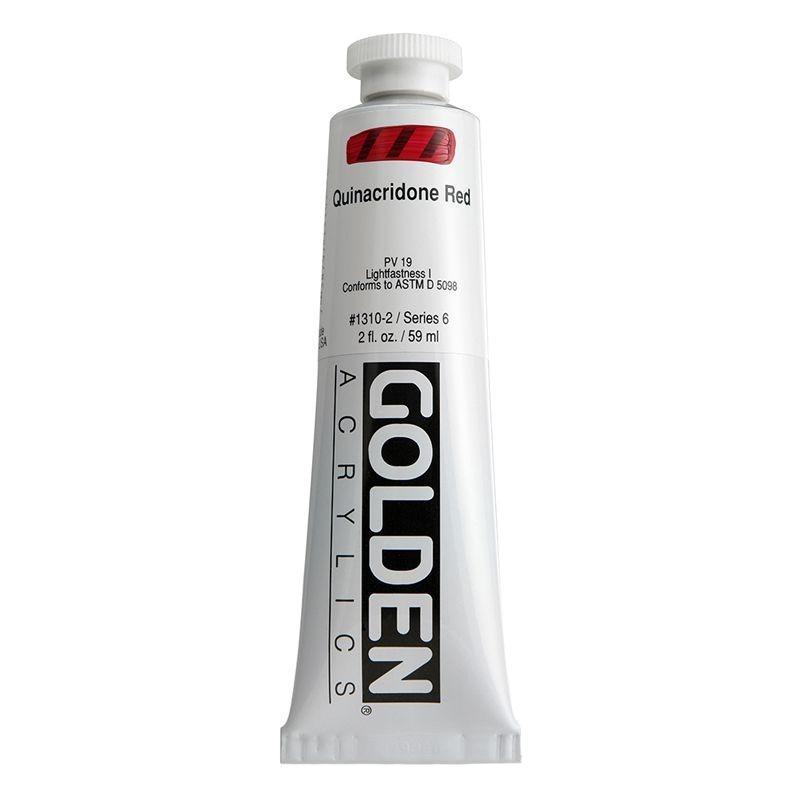GOLDEN - Heavy Body Acrylic Colour (59ml) Titanium White (S1)
Available in up to 136 shades
Exceptionally smooth, buttery consistency
Largest selection of unique pure pigments
Excellent permanency and lightfastness
Noted for their thickness
Great flexibility when dry
Video: Golden Artist Colours - Acrylic Paint Demo
The first acrylic colours offered by Golden Artist Colours, Heavy Body paints are known for their exceptionally smooth, buttery consistency. The Heavy Body palette includes the largest assortment of unique pure pigments in a 100% acrylic emulsion available to professional artists. These colours offer excellent permanency and lightfastness. There are no fillers, extenders, opacifiers, toners, or dyes added.
Each Heavy Body colour formula reflects the qualities of its pigment. Colours that tolerate a higher pigment load dry to a more opaque, matte finish. Colours that are more reactive and do not allow as much pigment loading tend to have a glossier, more transparent, finish. Because Heavy Body colours contain no matting agents, the gloss of each colour will be different.
Golden Heavy Body Acrylics are noted for their thickness. These paints have the ability to "stand up" and retain brush strokes or palette knife marks on the canvas. All Heavy Body colours are thixotropic in nature. This means that when brushing or stirring, the paints actually lose viscosity and feel much thinner. The faster the paints are moving, the thinner they feel. Returned to a state of rest, the paints gradually increase in thickness until they are again restored to their formulated viscosity.
These paints retain excellent flexibility when dry, greatly diminishing the possibility of cracking that occurs in other natural and synthetic polymer systems. The acrylics can absorb the constant stress and strain placed on canvas when shipped or as it expands and contracts with changes in temperature and humidity. Please note: acrylics begin to harden at 15 degrees Centigrade or 59 degrees Fahrenheit, and become quite hard at temperatures below freezing. This is especially important to remember when shipping a painting in freezing conditions or when unrolling a painting that has been kept in cold storage.
Mixing Abilities
Heavy Body Colours can be mixed with all of our Golden Mediums, Gels and other paint lines, including our High Flow Acrylics, Fluid Acrylics, High Load Colors, Iridescent Colors, Paste Paints, and Matte Acrylics. By mixing paint lines, artists can produce a wide range of paint consistencies without compromising color strength. Heavy Body viscosity can also be reduced successfully with water. Remember: the more water added to the acrylics, the greater the subsequent shrinking of the paint layer. Too much water will reduce the binding capability of acrylic paints and tends to flatten out their sheen.
Some artists have used other solvents, including alcohols, to thin these Acrylics. All of the acrylics are sensitive to additions of solvent. If you require this addition it is advisable to dilute the solvent first with water to reduce the shocking effect of the solvent. In some cases, adding solvent too quickly will coagulate the acrylic.
Gloss Variations
When producing the Heavy Body line, Golden consciously broke the mould of acrylics made in the past. Most acrylics were produced to have an even satin sheen across the range of colors. Manufacturers felt artists wanted this even sheen to avoid the differences encountered by oils. Each pigment is made to its own level of matte or gloss depending upon its own unique nature. It is always possible to add matting agents and other whitening materials to the product, but once added, it is impossible to take them away. The Heavy Body line of acrylics contains no additional flattening agents, opacifiers or other solids that might interfere with the clarity of the pigments.
It is quite evident when looking at our color chart that colors in the Heavy Body line do differ in gloss. For example, the sheen of Golden Ultramarine Blue or Burnt Umber is almost a dead matte, whereas the sheen of Green Gold or Dioxazine Purple is extremely glossy. Some artists may find this problematic; yet for many artists the variations offer the same nuances of color that are so appreciated in oil paints and give what many describe as an organic look to the colors. Without the need for opacifiers we can offer colors as similar in hue as the Cadmiums and Hansas, yet quite different in their ability to cover and in their clarity when mixing.
Mixture Colours
The mixture colours within the Golden Heavy Body line of acrylics include Green Gold, Jenkins Green, Quinacridone Crimson and Turquois (Phthalo), as well as our Neutral Greys, Historical Colours, Blended Colours and Primaries. Some mixture colours, such as Historical Colours, offer safe and lightfast alternatives for pigments that, otherwise, would be dangerous or insufficiently light stable for artist use. The range is divided among inorganic and organic pigments.

















































